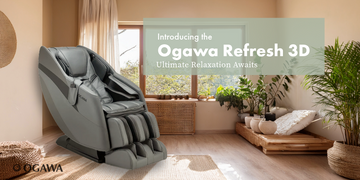Tendonitis (or tendinitis) is an inflammation of the tendons and can affect athletes and non-athletes. Typically, when you engage in repetitive action, you risk causing strain to your tendons. Does massage help tendonitis pain? In this post, we’ll explore how massage can help tendonitis pain and provide potential relief.
What Exactly Is Tendonitis?
When you’re doing an activity like running or stretching that uses the same motion over and over again, your tendons may become strained as a result. This strain leads to inflammation, swelling, and tenderness around the affected area, commonly impacting the elbows, shoulders, knees, or wrists. Individuals with tendonitis often experience discomfort during movement, stiffness, and, in severe cases, difficulty performing routine tasks due to persistent aches or sharp pain.
One of the problems that those who suffer from tendonitis run into is trying to rush their recovery. Repetitive motion injuries require staying away from the same injuries that lead to the injury. Yet many of those who feel the pain dissipate return to action and cause further damage to their tendons. Understanding its causes will help you realize why you must wait before continuing your activities.
How Is Tendonitis Caused?
As mentioned before, repetitive strain is the most typical cause of tendonitis. Sports enthusiasts, manual laborers, and individuals engaged in activities demanding repetitive motions, like typing or painting, are prone to developing tendonitis. Overuse of certain muscle groups without adequate rest or improper technique exacerbates the risk, which is often found in runners. Recognizing the initial signs, such as localized pain or tenderness, is crucial for timely intervention, like massages that help muscle strain and pain relief -- preventing the condition from progressing into a more severe state that may require prolonged recovery.
Methods of Dealing With Tendonitis Pain
When asking, “Does massage help tendonitis pain?” we need to look at the types of pain relief available. Tendonitis pain relief can be short-term or long-term, and achieved through various methods.
Short Term Pain Relief Options
When it comes to tendonitis pain, short-term relief options can help reduce pain temporarily while working on addressing the underlying issue long-term.
- Rest: Allowing the affected area to recuperate by avoiding activities exacerbating pain or strain on the tendons. This includes other exercises that may cause the tendons to become overworked.
- Ice application: Applying ice packs for 15-20 minutes several times daily reduces inflammation and alleviates immediate discomfort.
- Over-the-counter medications: Using NSAIDs like ibuprofen or aspirin to temporarily manage pain and reduce inflammation.
Long-Term Pain Relief Options
If short-term treatment isn’t bringing the desired relief, or the pain is recurring, long-term relief options for tendonitis may be the next step.
- Activity modification: Altering repetitive motions or reducing intense activities that strain the affected tendons, preventing further aggravation. Repetitive action is part of the cause of tendonitis.
- Structured exercise: Engaging in tailored exercises to loosen tight muscles in legs, thighs, and calves, can improve flexibility, and gradually restore function to the affected area.
- Physical therapy: Seeking professional guidance for targeted physical therapy sessions to rehabilitate the area, reduce pain, and prevent it from occurring again.
- Massage therapy: Massage for tendonitis can be helpful by reducing pain and helping with long-term recovery.
Does massage help tendonitis pain? It turns out that it can significantly reduce the pain you get from strained ligaments.
Does Massage Help Tendonitis Pain: What Does the Science Say?
It’s easy to think that massage only produces a “placebo effect” on treating tendonitis pain, but the truth is quite different. Scientific studies have shown that massage techniques influence several physiological mechanisms that directly contribute to reducing pain and inflammation associated with tendonitis.
Massage techniques have also been shown to modulate the body’s response to inflammation. By applying pressure and manipulating soft tissues, specific massage techniques can help regulate cytokines, signaling molecules involved in the body's inflammatory processes. Less cytokines mean less discomfort for you because of your tendonitis.
Stress can increase inflammation-related discomfort. During a massage, manipulating muscles and connective tissues triggers the release of endorphins and other neurotransmitters. Endorphins act as natural painkillers, relieving the discomfort associated with tendonitis. The relaxation induced by massage also decreases the production of stress hormones like cortisol.
Benefits of Massage for Tendonitis Relief
Does massage help tendonitis pain? In many cases, it can significantly relieve someone suffering from this inflammation. There are many benefits that massage can offer to someone who wants to reduce their tendonitis pain.
Massage improves blood circulation in the affected area. Increasing blood flow promotes the delivery of oxygen and nutrients to the tendons, aiding in their repair and regeneration while flushing out metabolic waste and toxins that might contribute to inflammation.
Benefits include:
- Reducing inflammation: Massage for tendonitis promotes increased blood flow to the affected area, aiding in speeding up muscle strain recovery. This improved circulation helps deliver essential nutrients and oxygen to the tendons, facilitating healing and decreasing swelling.
- Relieving muscle tension: Specific massage techniques target muscle tension surrounding the affected tendons. The strain on the tendons diminishes by releasing tense muscles and fascia, reducing discomfort and enhancing flexibility.
- Pain management: The manipulation of soft tissues during massage triggers the release of endorphins, the body's natural painkillers. This natural pain relief mechanism helps individuals manage discomfort and massage muscles to find relief associated with tendonitis.
Massage’s effectiveness in dealing with tendonitis relief comes from its ability to stimulate the body's natural healing processes.
Different Kinds of Massage for Tendonitis
Is massage good for tendonitis, then? Well, each massage type can have an impact on muscles and tendons in different ways:
- Deep tissue massage: This technique targets deeper layers of muscles and connective tissues. It helps break up scar tissue, improve blood circulation, and alleviate chronic tension around the tendons, aiding in restoring mobility and reducing pain.
- Sports massage: Sports massages typically focus on recovering from athletic injuries, but they can also be instrumental in relieving pain from tendonitis.
- Swedish massage: Known for its gentle yet effective approach, Swedish massage combines long strokes and kneading to relax muscles, enhance circulation, and alleviate tension, relieving individuals with tendonitis.
Massage techniques like these have their own benefits, but the main drawback many people suffering from acute tendonitis have is arranging sessions with a therapist. Luckily, massage chairs can offer professional massages from the convenience of your own home. Modern massage chairs even offer AI-enhanced massages, and learn from the types of massage you prefer.
Dealing With Tendonitis
Is massage good for tendonitis? Throughout this exploration, we’ve looked at how massage can impact tendonitis and how it helps those with pain get relief. Massage chairs can help deliver in-home comfort through modern massage techniques. These techniques include features like deep tissue or swedish massage - all from the comfort of your home. While there are other options for short and long-term pain relief, incorporating an at-home option is both convenient and affordable. Why endure the pain when you can deal with it so easily?





